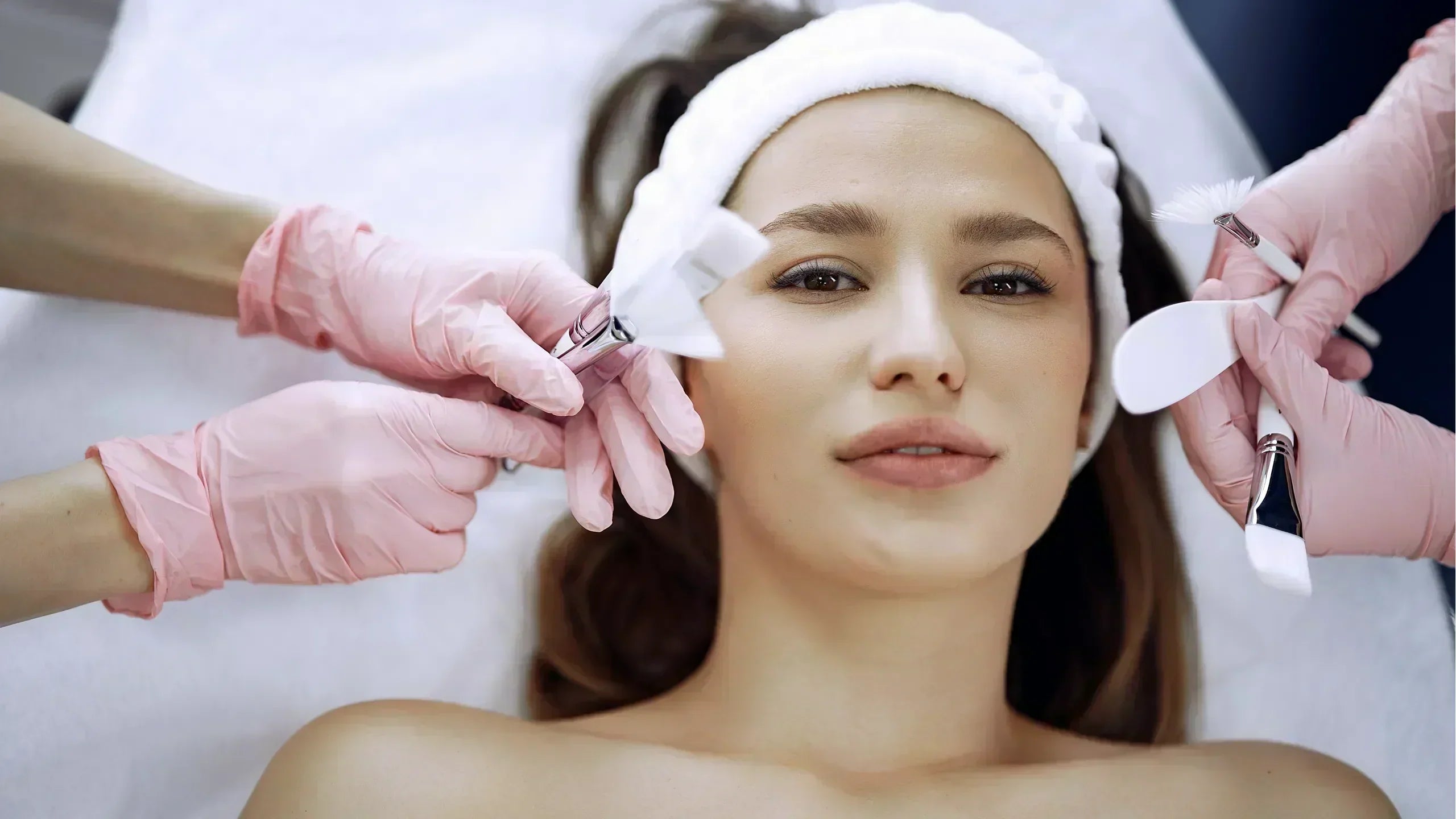Ultima A8S is the NEW Dr. Pen model with a screen displaying the current operating speed, new elegant black luxury design, fast powerful motor, and newly upgraded anti-backflow cartridges!

Looking to get into microneedling but want to avoid making mistakes? Microneedling is becoming highly popular since it's an effective treatment option for reducing the appearance of scars, fine lines and wrinkles, stretch marks, and other skin imperfections.
It's important to remember that, like any advanced skincare technique, it needs to be performed correctly to offer the best results.
Whether you're new to microneedling or have been using a pen for months, there are several mistakes that can affect your progress or, worse, harm your skin.
In this blog, we'll look at the top microneedling mistakes you're probably making and how you should fix them.
Many people make common microneedling mistakes. Here are some of the most frequent ones to avoid:
One of the most commonly misunderstood parts of microneedling is needle depth. It's easy to believe that a deeper setting would provide faster or better outcomes, but this isn't the case. The purpose of microneedling is to generate regulated microchannels, not wounds. Using a depth more than required might cause discomfort, bruising, and delayed healing.
Only specialists should use needles that are longer than 1 mm. At home, use a depth of 0.25 mm to 1.0 mm, depending on your target region and skin type. All Dr. Pen devices have changeable needle depths of up to 2.5 mm, but deeper settings require experience and professional skills to avoid issues.
Microneedling cartridges are designed to be used just once. This is a non-negotiable part of a safe treatment.
Reusing a cartridge, even if it appears clean, increases the risk of infection and dulls the needles, diminishing their efficiency.
A fresh, sterile cartridge guarantees that the skin is treated precisely and safely. Always discard your microneedling cartridge after one use, and make sure to sanitize your pen before and after each session. Skipping this step is one of the quickest ways to irritate or introduce bacteria to your skin.
Using retinol during or shortly following microneedling is a huge mistake that is often made. Retinol is a powerful chemical that can cause irritation, peeling, and inflammation, particularly when applied to recently treated skin.
Following microneedling, the skin becomes more permeable. Only soothing, moisturizing substances, such as hyaluronic acid, peptides, or ceramides, should be utilized.
Retinol and other actives can be reintroduced later in your routine, depending on how much time has passed since treatment. It's typically recommended after 72 hours once the skin barrier begins to recover.
Microneedling is not a daily or weekly treatment. It works by inducing a healing reaction in the skin, which requires time. Performing treatments too often disturbs the healing process and might result in irritation or barrier damage.
The skin needs time to rebuild. Depending on your skin type and treatment depth, the suggested frequency is every 4 to 6 weeks. This offers the skin adequate time to renew and react to collagen stimulation. Overdoing it has the opposite effect and can slow down the outcomes, which you want to avoid.
Microneedling is not a one-time treatment, nor does it provide instant results. While you may feel a momentary radiance or slight firmness in the first few days, actual effects will appear gradually as the skin heals and new collagen forms.
This process can take several weeks to a few months, depending on the severity of the skin concern and how frequently you treat it.
It's typical to think that redness, pinpoint bleeding, or pain indicate that the treatment is effective, but this is not always the case. In reality, more redness does not always imply more success. It could mean the treatment is too aggressive for your skin type or that the wrong depth is used.
Most home treatments cause light flushing or minor redness, which should subside within 24 to 48 hours. If your skin feels raw or excessively delicate, something has to be changed. Using the right needle depth, pressure, and aftercare can ensure results without over-traumatizing the skin.
Many people wonder, "Is microneedling the same as a vampire facial?" The answer is no. While both include the use of a microneedling device, the vampire facial vs. microneedling comparison has one key difference: platelet-rich plasma, commonly known as PRP.
A vampire facial is a professional treatment that involves drawing blood, processing it to extract PRP, and then applying it to the skin following microneedling. The growth factors in PRP hasten healing and increase collagen formation.
Standard microneedling does not require blood or PRP and is frequently combined with serums such as hyaluronic acid.
Both services enhance skin texture and tone, but vampire facial treatments must be conducted by a skilled expert, whereas microneedling may be done safely at home if adequate precautions are taken.
When performed correctly, microneedling is a highly successful treatment with incredible benefits, but it's important to avoid common mistakes.
Avoid using deep needles without proper training, never reuse cartridges, and avoid harsh actives such as retinol right after treatment. Give your skin adequate time between treatments and set realistic expectations. Your results require time and consistency.
Don't make microneedle mistakes, explore the full collection at Dr. Pen and upgrade your microneedling routine with expert tools and safe results.
For questions about cartridge compatibility, aftercare, or how to get started, contact our support team today via email or the contact form!
Best Ingredients for Younger-Looking Skin
Discover the most effective anti-aging skincare ingredients — retinol, peptides, vitamin C, niacinamide, and more — for firmer, smoother, younger-looking skin.
All About Microneedling With Exosomes
Discover how microneedling with exosomes accelerates skin repair, boosts collagen, reduces wrinkles, and enhances glow. Learn benefits, safety, and results.
The Ultimate Guide to Microneedling Serums for Glowing Skin
Learn how microneedling serums boost collagen, improve skin texture, and enhance glow. Discover the best ingredients and how to choose the right serum.